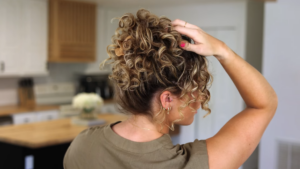Don’t let anxiety and fear hold you back! Take control by understanding where your worries begin. Identifying your anxiety triggers is the first step – are they work deadlines, social situations, or public speaking? Once you recognize the root of your fear, you can disrupt its power. Challenging negative thoughts that fuel anxiety is crucial. Question their validity and replace them with positive affirmations.
Calming techniques are your allies. Embracing mindfulness and relaxation techniques like deep breathing or meditation can bring peace in the moment. Adopting a healthy lifestyle is essential. Regular exercise, balanced meals, and quality sleep provide a strong foundation for managing anxiety.
But remember, you’re not alone. If self-care isn’t enough, seeking professional support is a sign of strength. Exploring therapy options like CBT (Cognitive Behavioral Therapy) can equip you with tools to manage anxiety effectively. Medication can also play a role in some cases.
Finally, build your support system. Building a network of loved ones who understand and encourage you creates a safety net. Creating a safe space, free from triggers and filled with calming elements, fosters well-being. Most importantly, practice self-compassion. Be kind to yourself throughout this journey. By understanding your triggers, challenging negative thoughts, and embracing self-care strategies, you can overcome anxiety and take charge of your life.
Identifying Anxiety Triggers: Understanding the Roots of Your Fears
Anxiety, a common mental health condition characterized by excessive worry and fear, can significantly impact daily life. To effectively manage anxiety, it’s crucial to identify the specific triggers that spark anxious episodes. These triggers can vary widely and may include specific situations, social interactions, or even certain thoughts or memories.
Understanding the root of your anxiety triggers is essential for developing effective coping strategies. By recognizing your triggers, you can start to anticipate and avoid them, or develop plans to manage them when they arise. For instance, if public speaking triggers your anxiety, you might practice relaxation techniques beforehand or seek out opportunities to speak in smaller settings to build confidence gradually.
Journaling can be a helpful tool for identifying anxiety triggers. By recording instances of anxiety and the surrounding circumstances, you can start to identify patterns and pinpoint potential triggers. Additionally, paying attention to your physical and emotional reactions can provide clues about your triggers. For example, if you experience increased heart rate, sweating, or shortness of breath in certain situations, these could be signs of an anxiety trigger.
Remember, identifying anxiety triggers is an ongoing process. As you become more aware of your patterns, you may discover new triggers or realize that existing triggers have changed. The key is to remain observant and proactive in managing your anxiety. By understanding your triggers, you can take back control and live a life less hindered by anxiety.
Challenging Negative Thoughts: Disrupting the Cycle of Anxiety
Anxiety often feeds on a cycle of negative thoughts that distort reality and heighten fear. These thoughts, often automatic and intrusive, can take various forms, such as catastrophizing, predicting the worst possible outcomes, or magnifying negative experiences. However, challenging these negative thoughts is a powerful tool for breaking the cycle of anxiety and regaining control over one’s mental well-being.
Identifying and questioning negative thoughts is the first step in challenging them. When an anxious thought arises, take a moment to recognize it and examine its validity. Ask yourself if the thought is realistic, helpful, or based on facts. Often, you’ll find that these thoughts are exaggerated, irrational, or unhelpful.
Replacing negative thoughts with more positive and balanced ones is crucial. Instead of dwelling on the worst-case scenario, focus on more realistic and optimistic possibilities. Remind yourself of your strengths, past successes, and the evidence that contradicts your negative thoughts.
Challenging negative thoughts requires practice and persistence. It’s not about eliminating all negative thoughts but rather about developing the skills to recognize and challenge them effectively. With consistent effort, you can disrupt the cycle of anxiety, reduce its impact on your daily life, and cultivate a more positive and resilient mindset.
Embracing Mindfulness and Relaxation Techniques: Finding Calm in the Midst of Anxiety
When anxiety strikes, it can feel like a storm is raging within, making it difficult to find peace and clarity. However, amidst the chaos, there lies a powerful antidote: mindfulness and relaxation techniques. These practices, rooted in the present moment and focused on cultivating inner calm, can effectively counteract the overwhelming effects of anxiety.
Mindfulness meditation, a practice that involves focusing attention on the present moment without judgment, can help break the cycle of anxious thoughts and worries. By anchoring yourself in the present, you can observe your thoughts and feelings without getting caught up in them, reducing their power to control you.
Deep breathing exercises, such as diaphragmatic breathing, can activate the body’s natural relaxation response, counteracting the physiological effects of anxiety like rapid heartbeat and muscle tension. By slowing down and deepening your breath, you can signal your body to shift from “fight-or-flight” mode to a state of calm.
Progressive muscle relaxation, a technique that involves tensing and releasing different muscle groups throughout the body, can effectively release pent-up tension and promote relaxation. As you tense and relax each muscle group, you become more aware of the sensations in your body, allowing you to let go of physical anxiety symptoms.
Incorporating mindfulness and relaxation techniques into your daily routine can create a sanctuary of calm amidst the turbulence of anxiety. By regularly practicing these techniques, you can cultivate a sense of inner peace, resilience, and well-being, empowering you to navigate life’s challenges with greater ease and composure.
Adopting a Healthy Lifestyle: Nurturing Your Body and Mind to Combat Anxiety
Prioritizing Physical Activity: Moving Your Body to Manage Anxiety
Regular physical activity is not just about physical fitness; it’s also a powerful tool for managing anxiety. Exercise releases endorphins, natural mood boosters that can elevate your spirits and reduce stress. Aim for at least 30 minutes of moderate-intensity exercise most days of the week. Find activities you enjoy, whether it’s brisk walking, swimming, cycling, or dancing.
Embracing a Nourishing Diet: Fueling Your Well-being with Wholesome Choices
What you eat has a profound impact on your mental and physical health. A balanced diet rich in fruits, vegetables, whole grains, and lean protein provides your body with the essential nutrients it needs to function optimally and cope with stress. Limit processed foods, sugary drinks, and excessive caffeine, which can worsen anxiety symptoms.
Cultivating Restful Sleep: Recharging Your Mind and Body for Resilience
Sleep is crucial for both physical and mental health. When you’re well-rested, you’re better equipped to manage stress and regulate emotions. Aim for 7-8 hours of quality sleep each night. Establish a regular sleep schedule, create a relaxing bedtime routine, and avoid electronic devices before bed to promote restful sleep.
Seeking Professional Support: When Self-Care Isn’t Enough
Recognizing When Self-Care Needs Reinforcement: Understanding the Limits of Self-Help
While self-care strategies like exercise, relaxation techniques, and healthy lifestyle choices can be highly beneficial for managing anxiety, there are times when these efforts alone may not be enough. If your anxiety is severe, persistent, or interfering with your daily life, seeking professional support is crucial.
Exploring Therapy Options: Tailoring Treatment to Your Needs
A wide range of effective therapies can help manage anxiety, including cognitive behavioral therapy (CBT), which focuses on identifying and changing negative thought patterns, and exposure therapy, which gradually exposes you to feared situations in a safe environment. A therapist can work with you to determine the most appropriate approach for your individual needs.
Harnessing the Power of Medication: Augmenting Self-Care Strategies
In some cases, medication may be prescribed alongside therapy to provide additional relief from anxiety symptoms. Antidepressants and anti-anxiety medications can help regulate brain chemicals involved in mood and anxiety, reducing the severity of symptoms and enhancing the effectiveness of therapy.
Anxiety can be a powerful force, but you don’t have to let it hold you back. By understanding the roots of your fears, you can start to disarm them. Identifying your anxiety triggers is the first step. Are deadlines, social situations, or public speaking the culprits? Once you recognize the source of your fear, you can develop strategies for managing it.
Negative thoughts often fuel the fire of anxiety. Challenge these distorted perspectives! Question their validity and replace them with positive affirmations that build your confidence.
Don’t forget the power of calming techniques! Mindfulness and relaxation methods like deep breathing or meditation can bring peace in the moment. Additionally, a healthy lifestyle is your foundation for combating anxiety. Regular exercise, balanced meals, and quality sleep provide the strength and resilience you need.
Remember, you’re not alone in this fight. If self-care isn’t enough, seeking professional support shows courage, not weakness. Explore therapy options like CBT to learn tools for managing anxiety effectively. Medication can also be a valuable addition to your treatment plan in some cases.
Build a support system of loved ones who understand and encourage you. Create a safe space free from triggers and filled with calming elements to foster well-being. Most importantly, practice self-compassion throughout this journey. Be kind to yourself as you work towards overcoming anxiety.
By understanding your triggers, challenging negative thoughts, and embracing self-care strategies, you can take back control of your life and experience a greater sense of peace and well-being. Anxiety doesn’t have to define you. You have the power to overcome it and live a fulfilling life.








